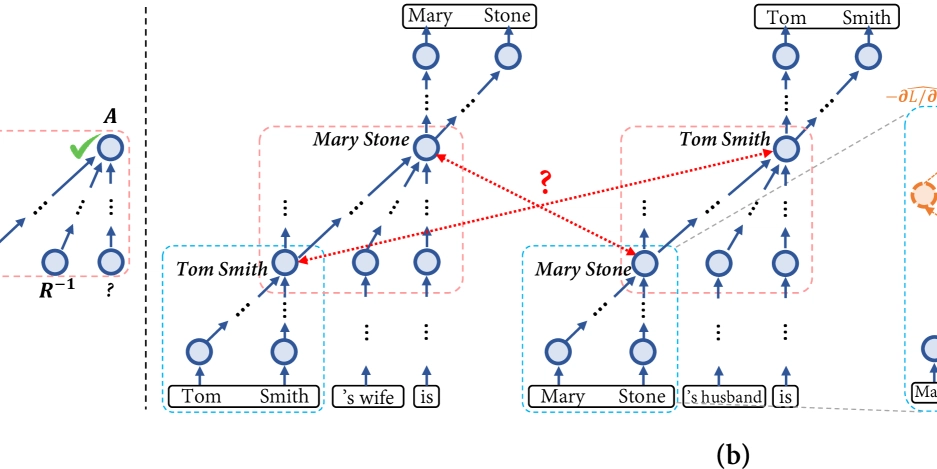What is Normalization?
Understanding Database Normalization: 1NF, 2NF, 3NF, BCNF, 4NF, and 5NF What is Normalization? Normalization is a process in database design that organizes data to reduce redundancy and improve data integrity. It involves dividing a database into smaller, related tables and defining relationships between them. The primary goals of normalization are: Eliminating data redundancy (removing duplicate data) Ensuring data consistency (avoiding anomalies) Simplifying database maintenance Why is Normalization Needed? Without normalization, databases can suffer from problems such as: Data redundancy: Unnecessary duplication of data, leading to increased storage costs. Update anomalies: Changes made to data in one place may not reflect correctly in all occurrences. Insertion anomalies: Difficulty in inserting new data without including unwanted details. Deletion anomalies: Deleting a record may result in loss of other valuable information. Normalization helps structure the data efficiently, making it easier to retrieve, modify, and maintain. Normal Forms Explained Normalization is categorized into different normal forms (NFs). Each NF builds upon the previous one, adding stricter rules to ensure better organization. 1st Normal Form (1NF) – Eliminate Repeating Groups A table is in 1NF if: Each column contains atomic (indivisible) values. Each row is unique and identified by a primary key. No repeating groups or arrays exist in a column. Example of a non-1NF table: | StudentID | Name | Courses | |-----------|--------|---------------| | 1 | John | Math, Science | | 2 | Alice | Science | After 1NF (Atomic values only): | StudentID | Name | Course | |-----------|--------|---------| | 1 | John | Math | | 1 | John | Science | | 2 | Alice | Science | 2nd Normal Form (2NF) – Eliminate Partial Dependency A table is in 2NF if: It is in 1NF. It does not have partial dependencies (a non-key column should depend on the whole primary key, not just part of it). Example: Consider a table with a composite primary key (StudentID, CourseID): | StudentID | CourseID | StudentName | CourseName | |-----------|---------|-------------|------------| | 1 | 101 | John | Math | | 1 | 102 | John | Science | Here, StudentName depends only on StudentID and CourseName depends only on CourseID, violating 2NF. We split it into two tables: Students Table: | StudentID | StudentName | |-----------|-------------| | 1 | John | | 2 | Alice | Courses Table: | CourseID | CourseName | |----------|------------| | 101 | Math | | 102 | Science | Enrollment Table: | StudentID | CourseID | |-----------|---------| | 1 | 101 | | 1 | 102 | 3rd Normal Form (3NF) – Eliminate Transitive Dependency A table is in 3NF if: It is in 2NF. It does not have transitive dependencies (a non-key column should not depend on another non-key column). Example: | StudentID | StudentName | DepartmentID | DepartmentName | |-----------|-------------|-------------|---------------| | 1 | John | 10 | Computer Sci | Here, DepartmentName depends on DepartmentID, not on StudentID. We split it into two tables: Students Table: | StudentID | StudentName | DepartmentID | |-----------|-------------|-------------| | 1 | John | 10 | Departments Table: | DepartmentID | DepartmentName | |-------------|---------------| | 10 | Computer Sci | Boyce-Codd Normal Form (BCNF) – Stronger 3NF BCNF is a stricter version of 3NF: It is in 3NF. If there are multiple candidate keys, every determinant must be a super key. Example: | TeacherID | Subject | Classroom | |-----------|---------|-----------| | 1 | Math | A101 | | 2 | Science | A102 | If (TeacherID, Subject) is the primary key but Classroom depends only on Subject, not the full key, we need to separate the data into: Teachers Table: | TeacherID | Subject | |-----------|---------| | 1 | Math | | 2 | Science | Classrooms Table: | Subject | Classroom | |---------|-----------| | Math | A101 | | Science | A102 | 4th Normal Form (4NF) – Eliminate Multi-Valued Dependencies A table is in 4NF if: It is in BCNF. It has no multi-valued dependencies (a single primary key column should not have multiple independent values). 5th Normal Form (5NF) – Eliminate Join Dependency A table is in 5NF if: It is in 4NF. It eliminates join dependency (data should not be split in a way that requires complex joins to reconstruct meaningful information). Where and When to Use Normalization Use normalization when designing transactional databases, such as e-commerce, banking, and enterprise applications. Avoid ex

Understanding Database Normalization: 1NF, 2NF, 3NF, BCNF, 4NF, and 5NF
What is Normalization?
Normalization is a process in database design that organizes data to reduce redundancy and improve data integrity. It involves dividing a database into smaller, related tables and defining relationships between them.
The primary goals of normalization are:
- Eliminating data redundancy (removing duplicate data)
- Ensuring data consistency (avoiding anomalies)
- Simplifying database maintenance
Why is Normalization Needed?
Without normalization, databases can suffer from problems such as:
- Data redundancy: Unnecessary duplication of data, leading to increased storage costs.
- Update anomalies: Changes made to data in one place may not reflect correctly in all occurrences.
- Insertion anomalies: Difficulty in inserting new data without including unwanted details.
- Deletion anomalies: Deleting a record may result in loss of other valuable information.
Normalization helps structure the data efficiently, making it easier to retrieve, modify, and maintain.
Normal Forms Explained
Normalization is categorized into different normal forms (NFs). Each NF builds upon the previous one, adding stricter rules to ensure better organization.
1st Normal Form (1NF) – Eliminate Repeating Groups
A table is in 1NF if:
- Each column contains atomic (indivisible) values.
- Each row is unique and identified by a primary key.
- No repeating groups or arrays exist in a column.
Example of a non-1NF table:
| StudentID | Name | Courses |
|-----------|--------|---------------|
| 1 | John | Math, Science |
| 2 | Alice | Science |
After 1NF (Atomic values only):
| StudentID | Name | Course |
|-----------|--------|---------|
| 1 | John | Math |
| 1 | John | Science |
| 2 | Alice | Science |
2nd Normal Form (2NF) – Eliminate Partial Dependency
A table is in 2NF if:
- It is in 1NF.
- It does not have partial dependencies (a non-key column should depend on the whole primary key, not just part of it).
Example:
Consider a table with a composite primary key (StudentID, CourseID):
| StudentID | CourseID | StudentName | CourseName |
|-----------|---------|-------------|------------|
| 1 | 101 | John | Math |
| 1 | 102 | John | Science |
Here, StudentName depends only on StudentID and CourseName depends only on CourseID, violating 2NF. We split it into two tables:
Students Table:
| StudentID | StudentName |
|-----------|-------------|
| 1 | John |
| 2 | Alice |
Courses Table:
| CourseID | CourseName |
|----------|------------|
| 101 | Math |
| 102 | Science |
Enrollment Table:
| StudentID | CourseID |
|-----------|---------|
| 1 | 101 |
| 1 | 102 |
3rd Normal Form (3NF) – Eliminate Transitive Dependency
A table is in 3NF if:
- It is in 2NF.
- It does not have transitive dependencies (a non-key column should not depend on another non-key column).
Example:
| StudentID | StudentName | DepartmentID | DepartmentName |
|-----------|-------------|-------------|---------------|
| 1 | John | 10 | Computer Sci |
Here, DepartmentName depends on DepartmentID, not on StudentID. We split it into two tables:
Students Table:
| StudentID | StudentName | DepartmentID |
|-----------|-------------|-------------|
| 1 | John | 10 |
Departments Table:
| DepartmentID | DepartmentName |
|-------------|---------------|
| 10 | Computer Sci |
Boyce-Codd Normal Form (BCNF) – Stronger 3NF
BCNF is a stricter version of 3NF:
- It is in 3NF.
- If there are multiple candidate keys, every determinant must be a super key.
Example:
| TeacherID | Subject | Classroom |
|-----------|---------|-----------|
| 1 | Math | A101 |
| 2 | Science | A102 |
If (TeacherID, Subject) is the primary key but Classroom depends only on Subject, not the full key, we need to separate the data into:
Teachers Table:
| TeacherID | Subject |
|-----------|---------|
| 1 | Math |
| 2 | Science |
Classrooms Table:
| Subject | Classroom |
|---------|-----------|
| Math | A101 |
| Science | A102 |
4th Normal Form (4NF) – Eliminate Multi-Valued Dependencies
A table is in 4NF if:
- It is in BCNF.
- It has no multi-valued dependencies (a single primary key column should not have multiple independent values).
5th Normal Form (5NF) – Eliminate Join Dependency
A table is in 5NF if:
- It is in 4NF.
- It eliminates join dependency (data should not be split in a way that requires complex joins to reconstruct meaningful information).
Where and When to Use Normalization
- Use normalization when designing transactional databases, such as e-commerce, banking, and enterprise applications.
- Avoid excessive normalization in read-heavy applications like reporting systems or data warehouses, where performance is more important than redundancy.
Advantages and Disadvantages of Normalization
Advantages
✔ Reduces data redundancy
✔ Eliminates update, insert, and delete anomalies
✔ Improves data integrity and consistency
✔ Saves storage space
✔ Ensures efficient data organization
Disadvantages
✘ Increases complexity by requiring multiple tables and joins
✘ Slows down query performance in complex databases
✘ Requires additional processing power to join tables
Conclusion
Normalization is a crucial concept in database design that ensures data integrity and efficiency. While it helps eliminate redundancy and anomalies, it should be balanced with performance needs. Understanding the different normal forms—1NF, 2NF, 3NF, BCNF, 4NF, and 5NF—can help database designers structure databases effectively.
Difference Between Partial Dependency and Transitive Dependency
| Feature | Partial Dependency | Transitive Dependency |
|---|---|---|
| Definition | When a non-prime attribute (non-key column) depends only on part of a composite primary key. | When a non-prime attribute depends on another non-prime attribute instead of directly on the primary key. |
| Occurs In | 2NF (Violation of 2NF) | 3NF (Violation of 3NF) |
| Key Issue | A composite primary key exists, and some attributes do not depend on the full key. | A non-key attribute depends on another non-key attribute rather than directly on the primary key. |
| Solution | Remove partial dependencies by splitting tables so that non-key attributes depend on the whole primary key. | Remove transitive dependencies by ensuring that all non-key attributes directly depend on the primary key. |
Example of Partial Dependency (2NF Violation)
Before Normalization (1NF, Not in 2NF):
| StudentID | CourseID | StudentName | CourseName |
|---|---|---|---|
| 1 | 101 | John | Math |
| 1 | 102 | John | Science |
| 2 | 103 | Alice | History |
-
Primary Key:
(StudentID, CourseID)(Composite key) -
Issue:
-
StudentNamedepends only onStudentID, not onCourseID. -
CourseNamedepends only onCourseID, not onStudentID. - Since attributes depend only on part of the primary key, this violates 2NF.
-
Fix (2NF Applied - Removing Partial Dependency)
Split into two tables:
Students Table
| StudentID | StudentName |
|---|---|
| 1 | John |
| 2 | Alice |
Courses Table
| CourseID | CourseName |
|---|---|
| 101 | Math |
| 102 | Science |
| 103 | History |
Enrollment Table (Mapping students to courses)
| StudentID | CourseID |
|---|---|
| 1 | 101 |
| 1 | 102 |
| 2 | 103 |
Example of Transitive Dependency (3NF Violation)
Before Normalization (2NF, Not in 3NF):
| StudentID | StudentName | DepartmentID | DepartmentName |
|---|---|---|---|
| 1 | John | 10 | Computer Science |
| 2 | Alice | 20 | Mechanical Engg |
-
Primary Key:
StudentID -
Issue:
-
DepartmentNamedepends onDepartmentID, not directly onStudentID. - Since
DepartmentIDis not a primary key but another non-key column, this violates 3NF.
-
Fix (3NF Applied - Removing Transitive Dependency)
Split into two tables:
Students Table
| StudentID | StudentName | DepartmentID |
|---|---|---|
| 1 | John | 10 |
| 2 | Alice | 20 |
Departments Table
| DepartmentID | DepartmentName |
|---|---|
| 10 | Computer Science |
| 20 | Mechanical Engg |
Key Differences Between 2NF and 3NF
| Feature | 2NF (Partial Dependency Issue) | 3NF (Transitive Dependency Issue) |
|---|---|---|
| Definition | Removes partial dependency where a non-key column depends only on part of a composite key. | Removes transitive dependency where a non-key column depends on another non-key column. |
| Occurs When | The table has a composite primary key and some attributes depend only on part of it. | A non-key column is functionally dependent on another non-key column instead of the primary key. |
| Primary Key Type | Composite primary key (more than one column). | Single-column primary key (usually). |
| Example Issue |
StudentName depends only on StudentID, not on the full key (StudentID, CourseID). |
DepartmentName depends on DepartmentID, which is not the primary key. |
| Solution | Break the table so that non-key attributes depend only on the full primary key. | Break the table so that non-key attributes depend only on the primary key, not on other non-key attributes. |
Conclusion
- 2NF eliminates partial dependencies by ensuring non-key attributes depend on the entire primary key.
- 3NF eliminates transitive dependencies by ensuring that non-key attributes do not depend on other non-key attributes.
refrences
https://chatgpt.com/canvas/shared/67ed77481004819195b71efb1d019f55










































































































































































![[The AI Show Episode 142]: ChatGPT’s New Image Generator, Studio Ghibli Craze and Backlash, Gemini 2.5, OpenAI Academy, 4o Updates, Vibe Marketing & xAI Acquires X](https://www.marketingaiinstitute.com/hubfs/ep%20142%20cover.png)














































































































































































































































.jpg?#)















































































































































![YouTube Announces New Creation Tools for Shorts [Video]](https://www.iclarified.com/images/news/96923/96923/96923-640.jpg)

![Apple Faces New Tariffs but Has Options to Soften the Blow [Kuo]](https://www.iclarified.com/images/news/96921/96921/96921-640.jpg)
































































































































